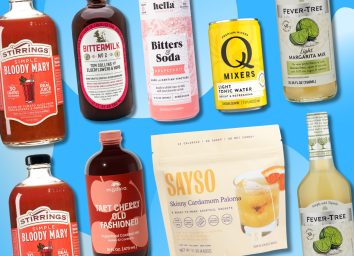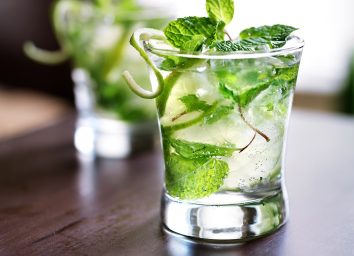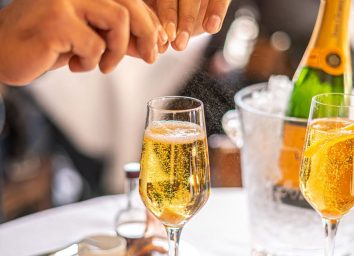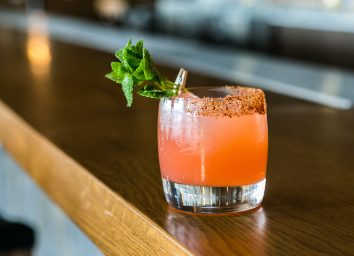Bitters for Beginners: Our Guide to Using This Home Bar Essential
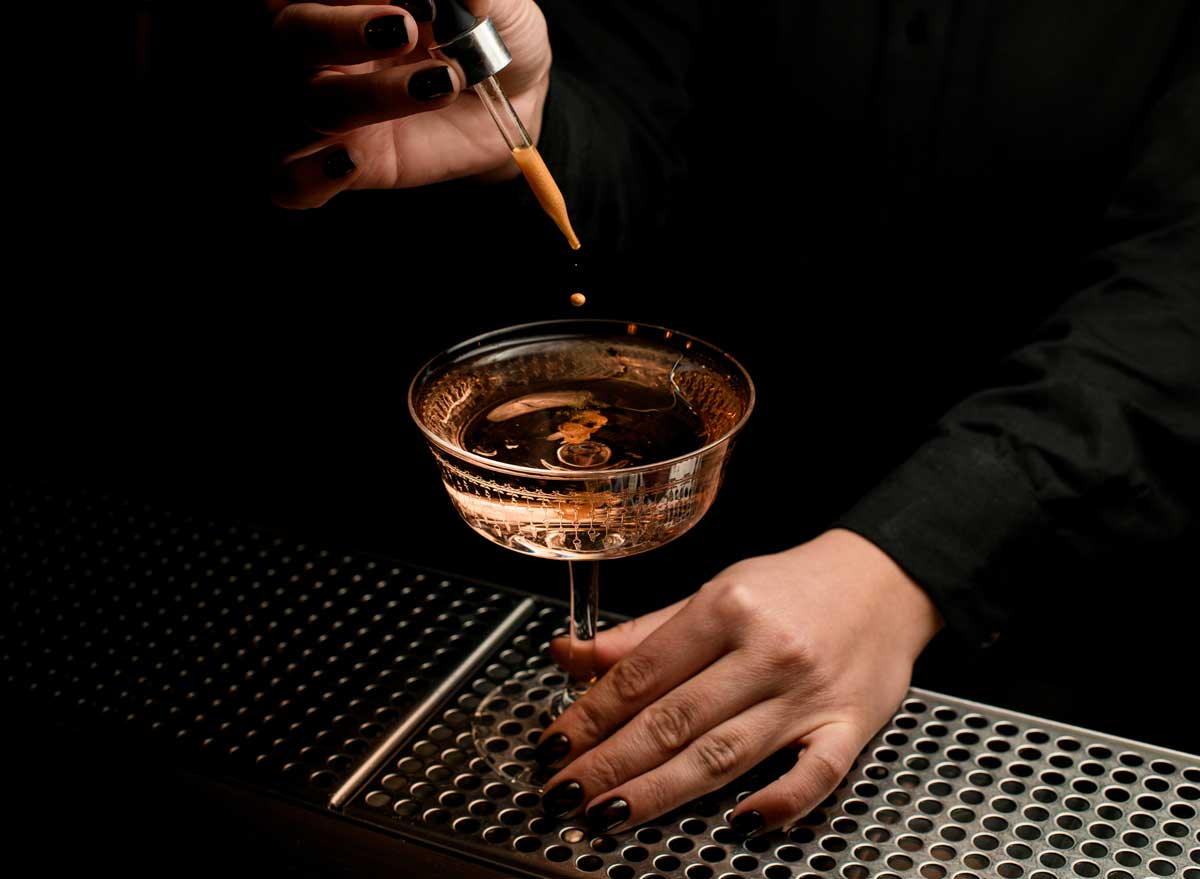
These days, bitters are a key component of any self-respecting home bartender's kit. But what are they, exactly? Which ones should you stock your cart with? And how can you use them in alcoholic drinks? Fret not, would-be mixologists: we talked to several experts to get the full scoop on these boozy infusions.
What are bitters?
Interestingly enough, bitters have been around for centuries—even before cocktails existed. They were considered a cure-all for a wide variety of ailments. It wasn't until the 1800s that bitters were appreciated beyond their medicinal properties for the way they added complexity to cocktails.
Flash forward 200 years, and the craft cocktail resurgence has sparked new interest in these potables. It makes sense, too: All it takes is a few drops of bitters to add some serious dimension to your drinks. Plus, as an added perk, bitters are known for aiding digestion, making them a perfect addition to an aperitif (an alcoholic beverage drank before a meal to stimulate the appetite) or digestif (an alcoholic beverage meant to drink after a heavy meal to aid digestion), or simply to soothe a stomach ache.
Thanks to the recent bitters boom, there's a plethora of innovative new flavors for mixologists to try, from Thai and Tahitian vanilla to Mexican mole, Memphis BBQ, and mission fig. In other words, the possibilities are endless for whipping up unique cocktails right at home.
All you need, of course, is a balanced selection of bitters. Fortunately, in this guide, we'll cover everything you need to know for using this bartending essential.
How are they made?
Bitters begin with a high-proof flavorless spirit. True to the name, bittering agents derived from roots, barks, flowers, berries, and other botanicals are then added to the base, along with any other ingredients desired for flavoring purposes (such as fruit, herbs, or spices).
Once the botanicals have been steeped in the alcohol for a certain length of time, and the spirit has absorbed those flavors, the ingredients are strained from the liquid and it's diluted to reduce the proof before bottling.
"Bitters are essentially the salt and pepper of the cocktail world," says Jake Barnett, co-founder of Old Fashioned Beverage & Hospitality.
Since the flavors in bitters are highly concentrated, you only need to use very small amounts of them to add intensity to a drink.
What's the history of these medicinal mixers?
During the 16th and 17th centuries, bitters were solely an over-the-counter remedy used to treat anything from a headache to heartburn. Then, in the early 1800s, bartenders made a game-changing discovery: As it turned out, when mixed into alcoholic drinks, bitters were capable of softening the harsh flavors of high-proof spirits like whiskey, brandy, and rum. Before long, bitters became a bartending staple.
In fact, nearly all the classic cocktails—from the Manhattan to the martini—depended on the addition of bitters.
The bitters market blossomed throughout the 19th century. In 1906, the federal government finally began regulating these products, which meant lowering the proofs and adding ingredients labels. However, the bitters boom came to a screeching halt during Prohibition, when they were outlawed, and few brands survived. The only brands that remained after World War II were Angostura and Peychaud's, which continue to be some of the most well-known producers today.
By the time Prohibition ended, the bitters market was scant—that is, until 2005 when cocktail pioneer and celebrated author Gary "Gaz" Regan introduced Regan's Orange Bitters No. 6., which paved the way for other artisanal bitters brands.
Now, there are countless varieties of bitters at any bartender's disposal, from fruit and spice-infused styles to herbal and floral blends.
What are the different types of bitters?
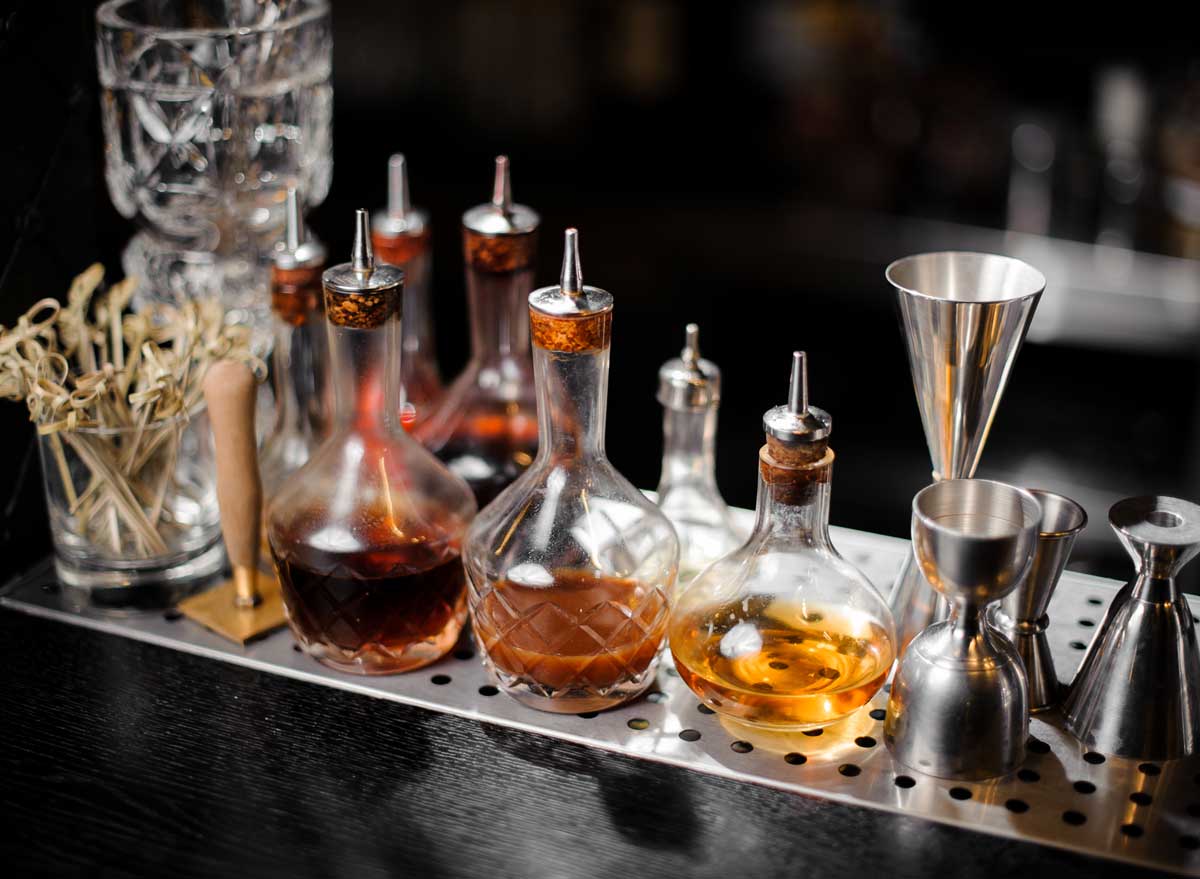
There are many types of bitters, and understanding the flavor profile of each will help you to determine which will be most useful for your cocktail needs. Here are all of the bitters categories you need to know about:
- aromatic
- orange
- fruity
- herbal
- floral
- chocolate
- spiced
- spicy
- celery
Aromatic bitters
Inarguably the largest and most well-known category, aromatic bitters blend a range of botanicals including herbs, roots (especially gentian root), and bark as well as warm spices. Aromatic bitters are considered a standard not only because they've been around the longest, but also because they're supremely versatile. This style is used in a number of classic cocktails and is known for having a somewhat medicinal taste.
Orange bitters
As the name suggests, this style gets its flavor from the zest of oranges. Spices like cardamom, coriander, and caraway are typically added to lend depth to these fruit-forward infusions. Depending on the brand's recipe, these bitters can range from dry to sweet. Orange bitters can brighten up a bevy of drinks, from an Old Fashioned to a gin martini.
By the way—orange isn't the only citrus used in making bitters. These days, you can also find bitters flavored with Meyer lemon, yuzu, and grapefruit, among other fruits.
Fruit bitters
Speaking of fruit, bitters can incorporate anything from spiced cherry to plum, apricot, and rhubarb. Professional mixologists and bar managers will often rotate their cocktail menus to showcase bitters with seasonal fruits. For example, apple cider or pear bitters make a fitting addition to fall drinks, while peach and apricot bitters provide a refreshing twist to summer drinks.
Herbal and floral bitters
These bitters highlight ingredients such as chamomile, hibiscus, dandelion, jasmine, and thyme. A single-note style, such a mint or sage bitters, tends to be subtler than an herbal or floral blend. While the flavor profile depends vastly on the formula, these bitters tend to be a perfect pick for gin and tequila-based beverages. When you're making a Bee's Knees, Lauren Mathews, lead bartender at Urbana in Washington, D.C., recommends adding a couple of drops of lavender bitters for a "dash of springtime."
Chocolate bitters
These cacao-infused bitters boast a rich flavor that pairs perfectly with oaky aged spirits, like bourbon, rye, and dark rum. This style is a delightful addition to coffee cocktails, but you can also use it in a White Russian, or an Old Fashioned as an alternative for Angostura bitters.
Spiced bitters
The truth is, most bitters contain some spices, but this style showcases these aromatic ingredients. Some highlight a single spice, like ginger bitters of cardamom bitters. Others feature blends of culinary spices, like Jamaican jerk, Thai, or Mexican mole seasoning. Spiced bitters add a certain warmth and earthiness to cocktails that blends especially well with rum and bourbon.
Spicy bitters
When you're seeking to crank things up a notch, reach for this style of bitters, which incorporates habanero, jalapeno, and other types of chili peppers for some major heat. Spicy bitters are your best bet for giving a Margarita or a Bloody Mary an instant kick. Mathews suggests using these bitters in Mezcal drinks.
Celery bitters
You may be surprised at just how versatile these veggie-infused bitters are. While celery bitters is a natural fit for Bloody Marys, it also lends a satisfyingly savory twist to gin and tonics or dry martinis. Fee Brothers is one of the more popular manufacturers of celery bitters.
Which essential bitters should you stock at home?
Experts agree that there are several essential bitters you should definitely stock your home bar cart with:
Angostura Bitters
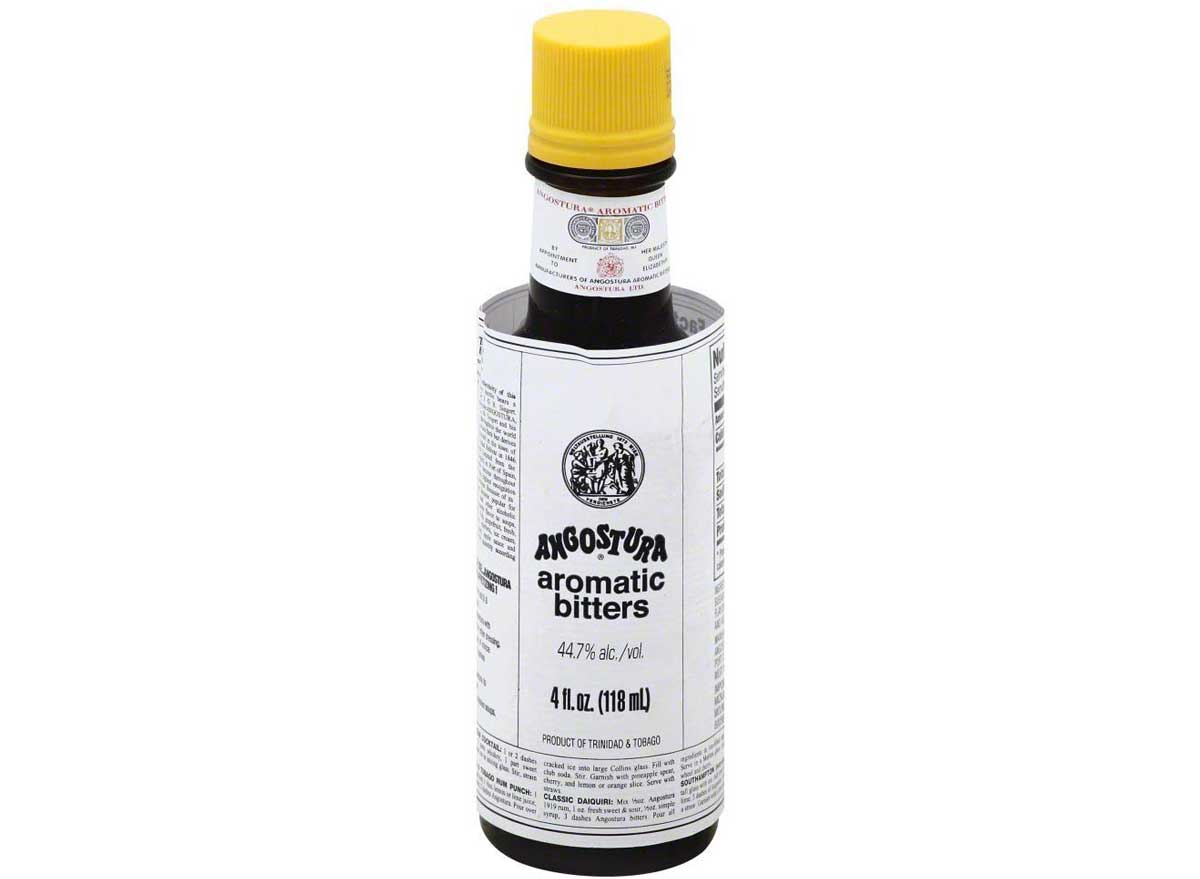
Use in: Old Fashioned
Angostura and Peychaud's are both popular brands of aromatic bitters. Angostura bitters, which contains over 40 ingredients, is heavy on the roots and spices — and can be used in everything from tiki drinks to champagne cocktails. Barnett calls it "Christmas in a bottle," thanks to the strong flavors of cinnamon and clove. Mathews, meanwhile, uses Angostura to provide balance in an Old Fashioned, as well as a Manhattan.
Peychaud's Bitters
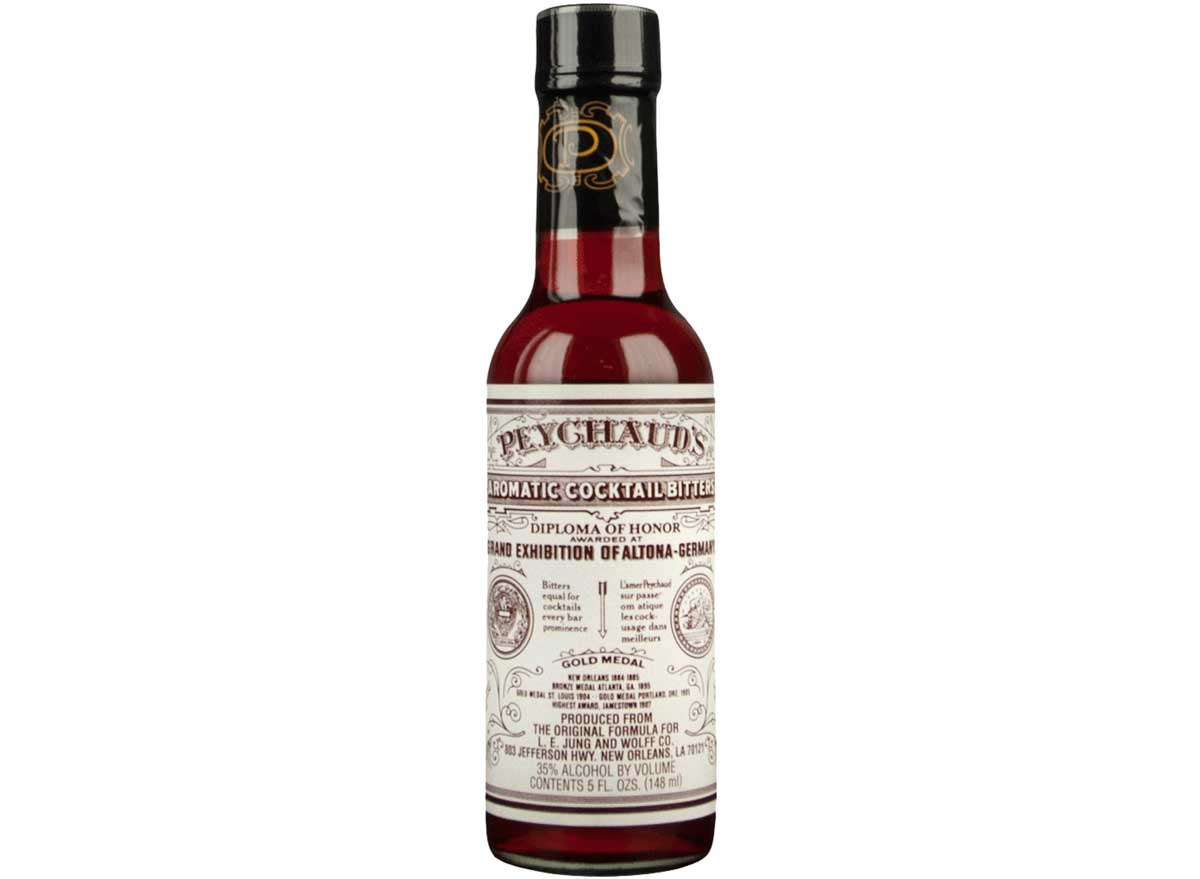
Use in: Sazerac, Vieux Carré, tequila-based cocktails
The licorice-forward Peychaud's, which is a touch sweeter than Angostura bitters, has become synonymous with the Sazerac cocktail. Barnett says this is because its distinct anise flavor compliments absynthe nicely. "They make a lovely addition to any stirred whiskey cocktail, and I enjoy a dash or two of Peychaud's in my gin and tonics," he adds.
But Peychaud's is also a popular ingredient in other drinks as well. In fact, both Angostura bitters and Peychaud's are present in Mathews' favorite classic cocktail, Vieux Carré. And Nicole Quist, beverage director at bartaco, says Peychaud's is her top choice for tequila cocktails. "They share the same vegetal and fruity notes with a licorice backbone," she explains.
Regans' Orange Bitters No. 6
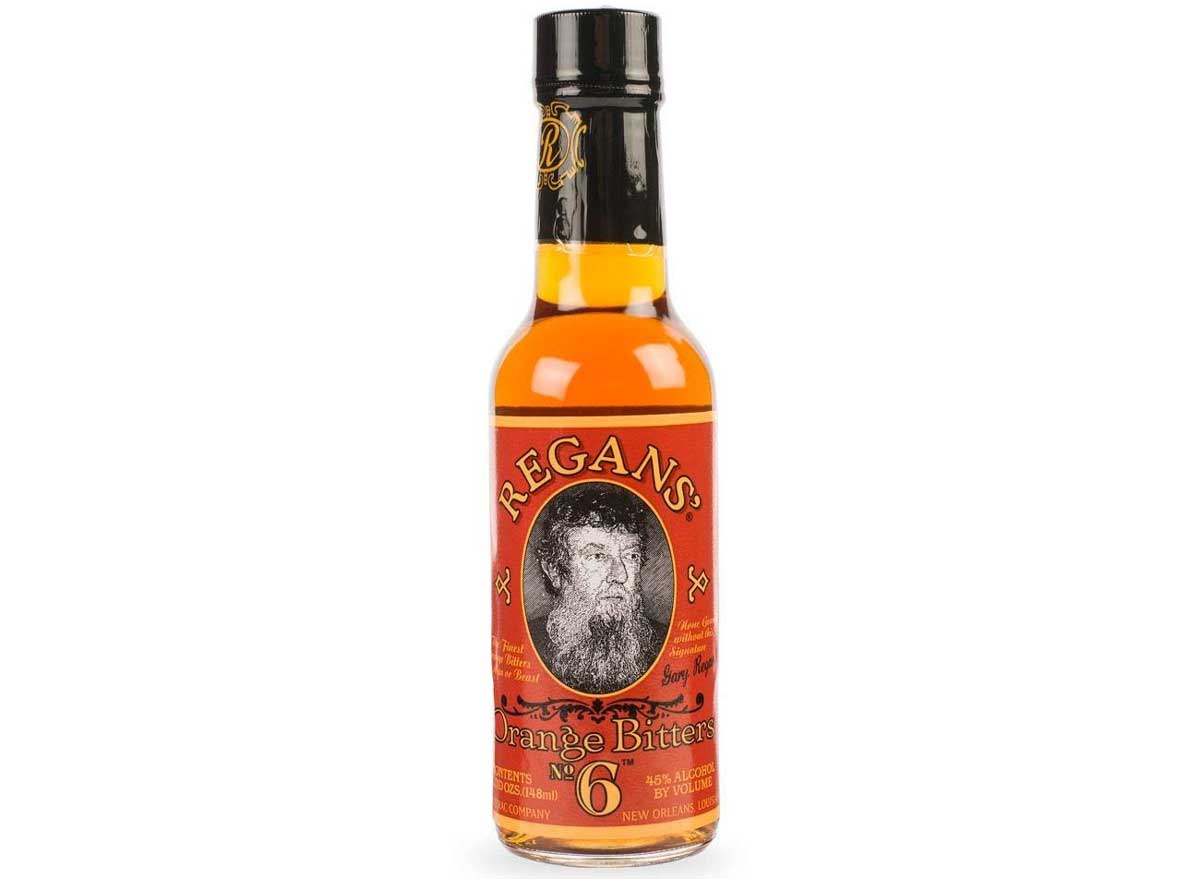
Use in: Martinis, Manhattans, Sherry Cobbler
Experts largely consider Regans' Orange Bitters No. 6 the gold standard for its particular style. Barnett says it's a must-have for martinis. It's also a common addition to Manhattans, where it enhances whiskey's spicy undertones. Quist suggests using this bitters in a Sherry Cobbler. "Combining Angostura and orange bitters with rum takes me to the islands," she adds. Remember that next time you're making a tiki drink or island-inspired cocktail.
Scrappy's Grapefruit Bitters
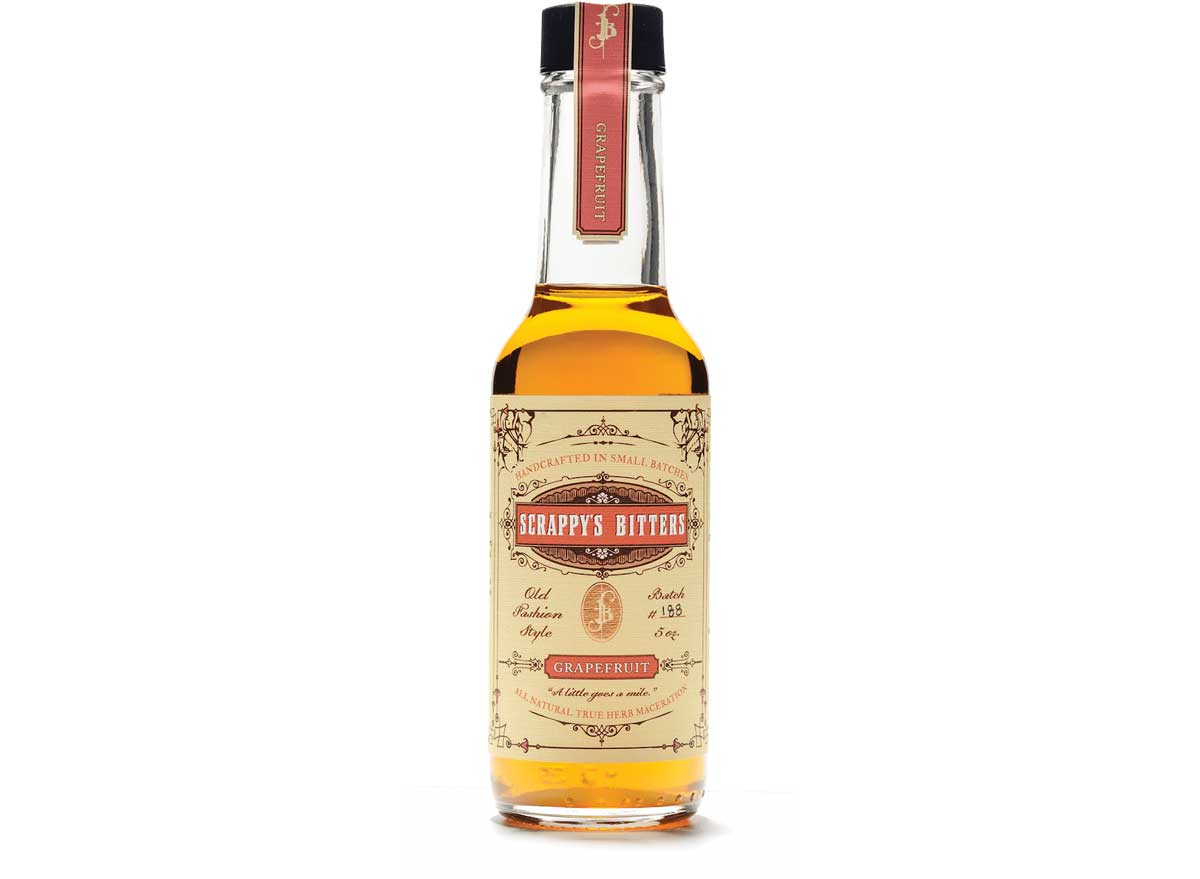
Use in: Mezcal "martini," Paloma Fresca, gin- and tequila-based cocktails
Another one of Barnett's must-haves is Scrappy's Grapefruit Bitters. "These are perhaps my most-used bottle of bitters, because of their wonderful versatility," he says. "Not only can they add a citrus punch to gin- and tequila-forward cocktails, but they bring a crisp bitterness that can balance out sweeter cocktails. I personally love them with vanilla and rye flavors." Quist uses grapefruit bitters to make a mezcal "martini," and notes that the burst of fresh citrus cuts through the clean vermouth nicely. Additionally, she shares that bartaco's refreshing Paloma Fresca—a riff on the popular tequila and grapefruit drink with a dash of sparkling water—includes grapefruit bitters.
Dram Lavender Lemon Balm Bitters
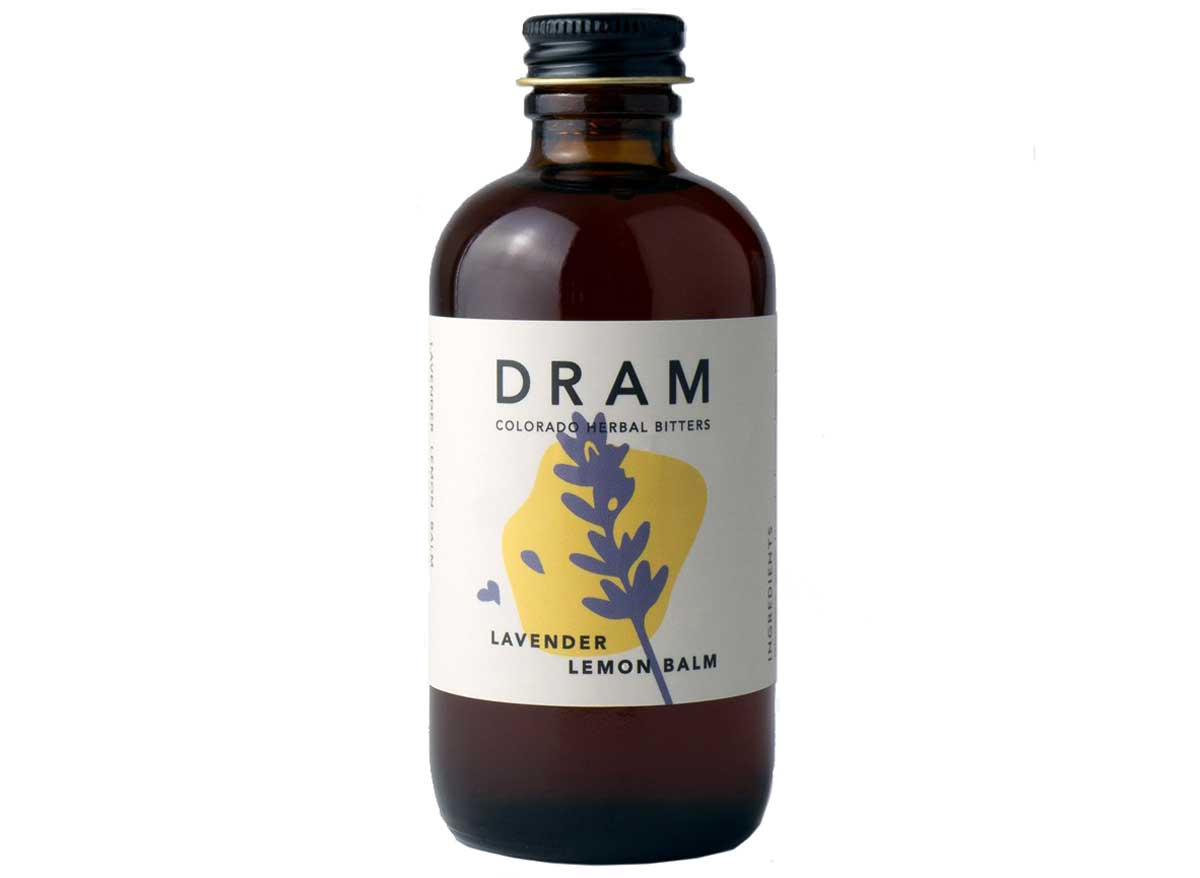
Use in: Lavender Tom Collins
Suzannah Gerber, a chef, beverage industry consultant, and author of the upcoming book Plant-Based Gourmet, suggests having a unique herbal, floral, or fruit-based blend on hand as well. Her favorites include the lineup from Strongwater (which offers such flavors as smoked grapefruit hops, ginger citrus, and orange licorice) and Dram Apothecary's creative offerings (such as lavender lemon balm).
How to use bitters in cocktails
Since bitters can pack quite powerful flavors, experts advise starting with very little in your cocktail recipes.
"Start small with one to two dashes, as you would with a pinch of salt in cooking," says Quist. "A little bitters go a long way, and you can always add more to enhance bold flavors."
The sky's the limit when it comes to integrating bitters into your homemade libations. If you have a bottle of wine lying around that you're not a big fan of, Brittany Clark, mixologist at the speakeasy Dot Dot Dot in Charlotte, N.C., advises adding a dash of bitters to punch up the flavor, and then turning it into a spritzer or cocktail.
Cocktail recipes to try at home
Need some more inspiration? Here, pro mixologists share some of their go-to recipes.
"Abre Los Ojos" — via Jake Barnett
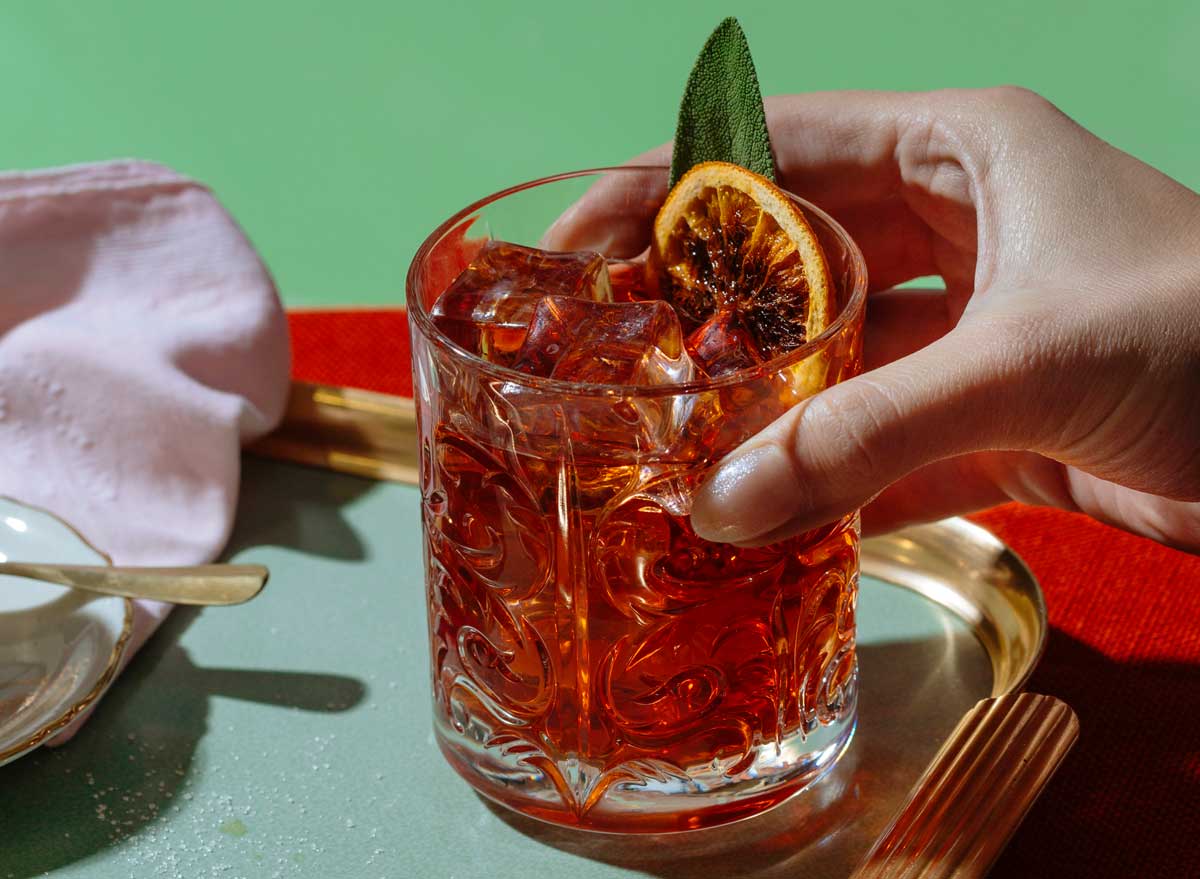
"The citrusy brightness of Scrappy's Grapefruit Bitters play nicely with the rye while keeping the Licor 43 from veering into cloying territory," says Barnett of this Manhattan variation.
Ingredients:
- 2 oz rye whiskey (preferably Rittenhouse)
- 5 oz sweet vermouth (preferably Punt e Mes)
- 0.5 oz Licor 43
- 3 dashes Scrappy's Grapefruit Bitters
- 1 dash Angostura Bitters
Preparation: Stir ingredients and strain into a chilled coupe glass. Garnish with a grapefruit peel.
"The Aromatic Negroni" — via Jake Barnett
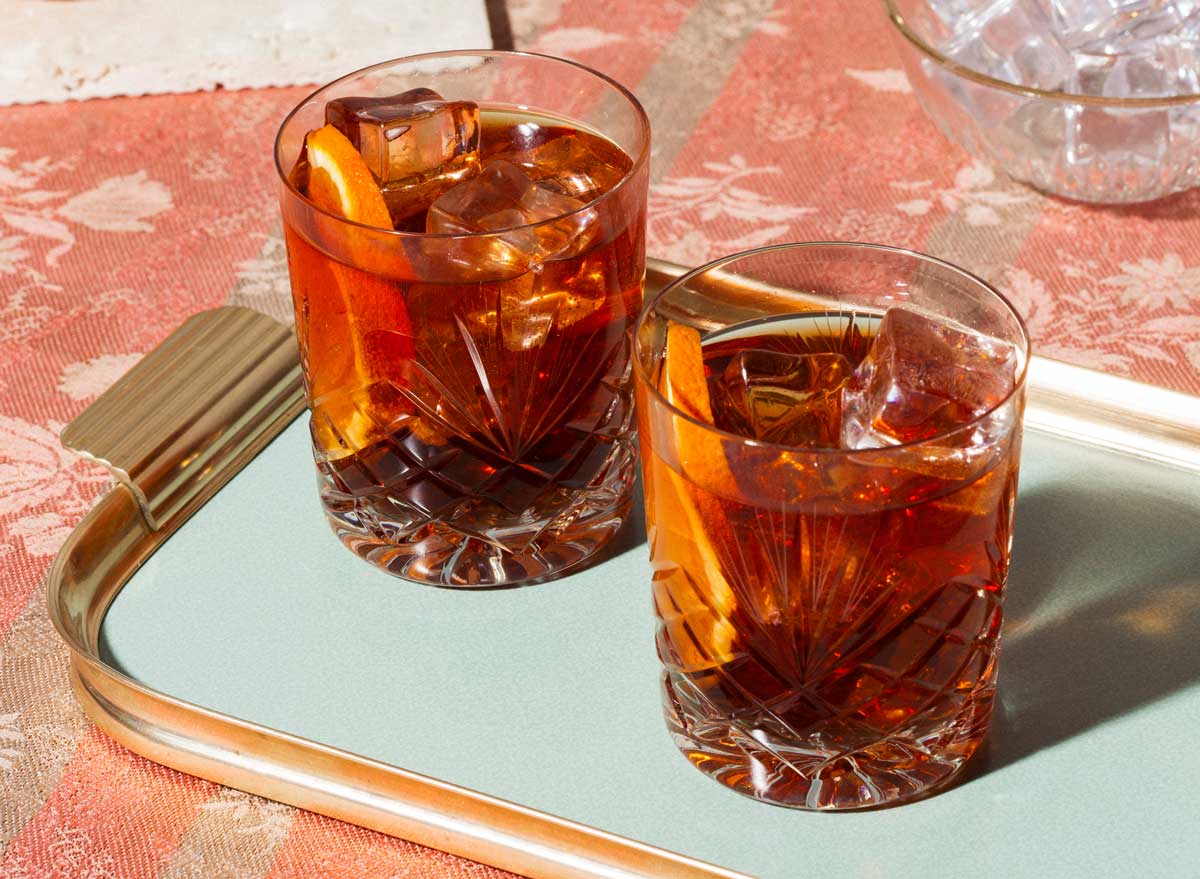
According to Barnett, this recipe is unique due to the larger amount of bitters that you use (as opposed to the typical two to three dashes). "Angostura and Peychaud's Bitters replace Campari in a Negroni for an even more bracing version of the classic aperitif," he adds.
Ingredients:
- 1/2 oz Angostura Bitters
- 1/2 oz Peychaud's Bitters
- 1 oz modern botanical gin (preferably Restless Spirits' Builders Gin)
- 1/2 oz sweet vermouth
Preparation: Build ingredients in a rocks glass and stir with plenty of ice. Garnish with a half-wheel of orange.
"Rhuby Rosé" — via Suzannah Gerber
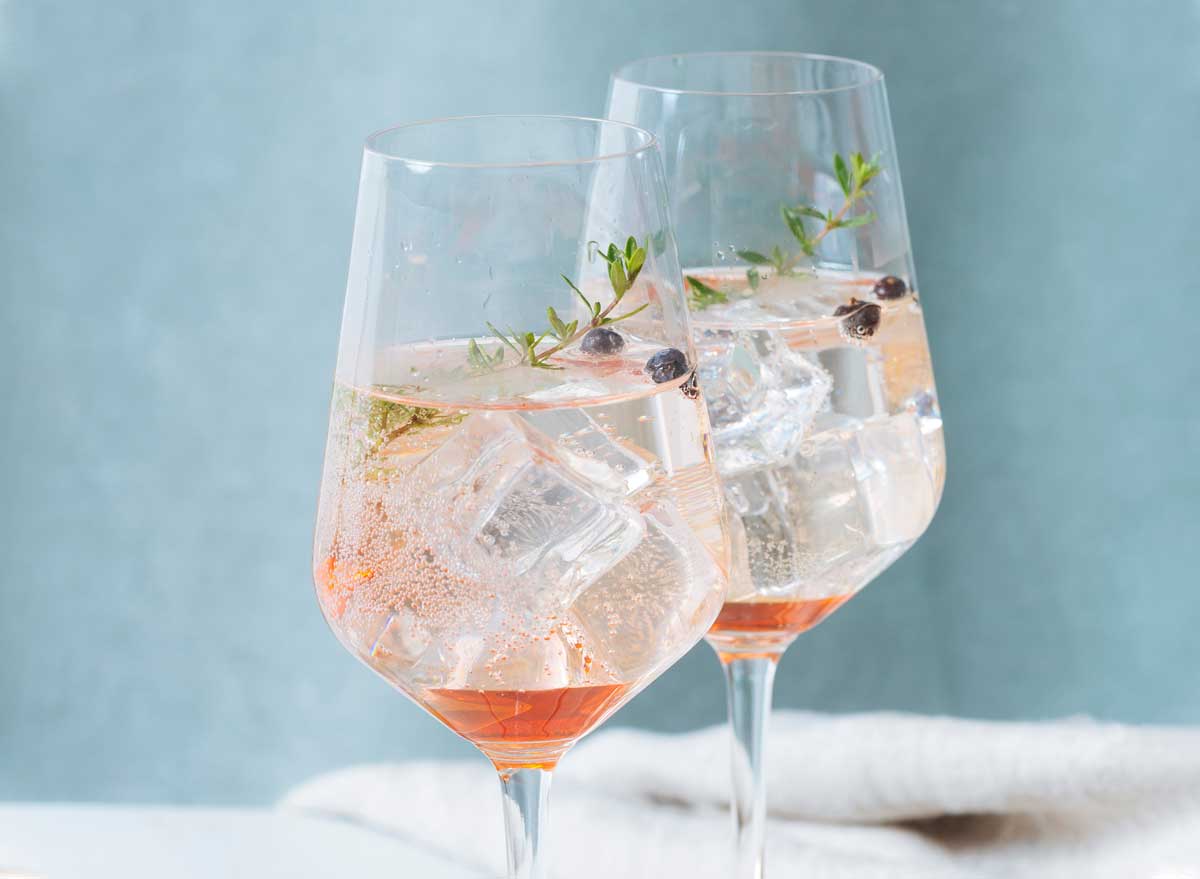
Gerber advises serving this cocktail in a Served in a Nick & Nora glass, with sweet balsamic reduction on the rim.
Ingredients:
- 1 oz single malt whiskey (such as Fifty Stone American Single Malt)
- 1/2 oz raspberry liqueur (such as Chambord)
- 1.2 – 2 oz sparkling rosé
- 6 drops, or 3 dashes of rhubarb bitters
Preparation: Add the sparkling rosé as a topper in the glass once the other ingredients have been stirred together.
"Winter Solstice: Darkest Night" — via Suzannah Gerber
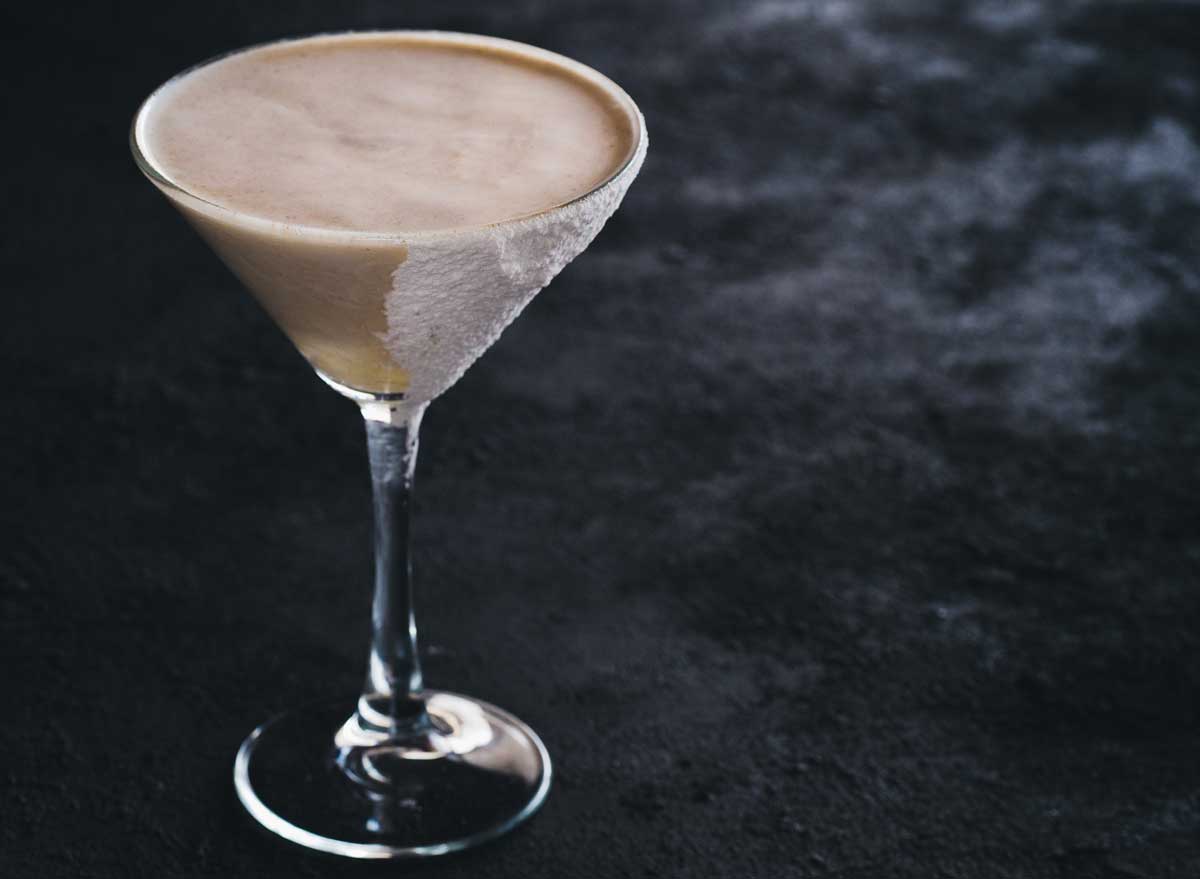
Ingredients:
- 1 oz Amber rum (such as Privateer True American Amber)
- 1/2 oz Becherovka Herbal Liquor
- 2 oz Bailey's Almande
- 3 dashes Black Bitters by DRAM
- 3 dashes Bitter Housewife Cardamom Bitters
- 1/4 oz lemon juice
Preparation: After blending the ingredients in a shaker, Gerber advises topping this rich concoction with a creamy organic oat creamer.
